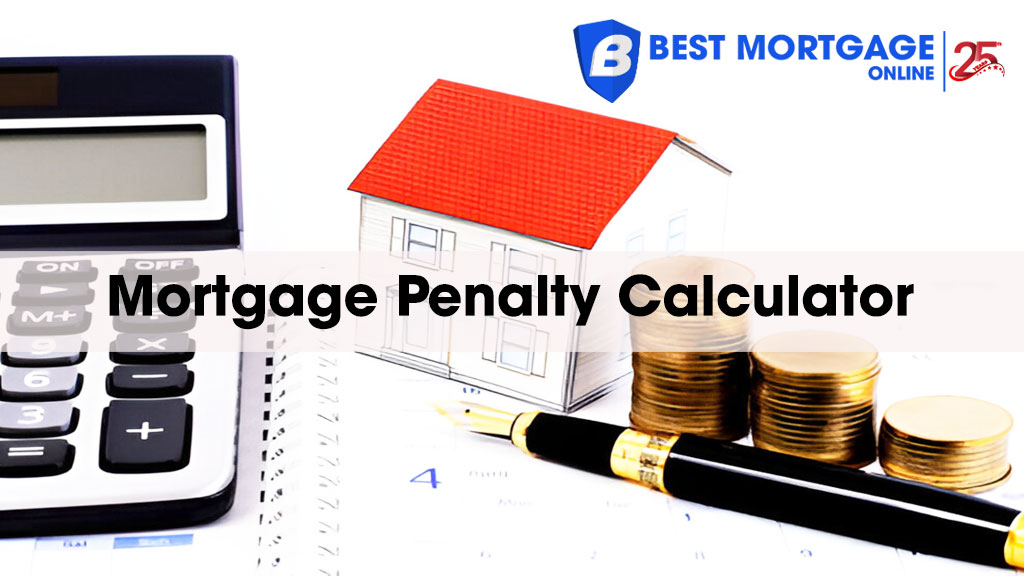Life is unpredictable. Have you ever thought about what happens to your family and your life if you can not work? A sudden illness or unexpected injury can place your home and financial well-being at serious risk. Do not worry! Mortgage disability insurance is a financial protection tool for Canadian homeowners facing disability risks.
So, in this article, BestMO will explain how it works, what it covers, and how to calculate it.
What is mortgage disability insurance?
Mortgage disability insurance is a type of coverage that covers up to 100% of your mortgage payment if you become disabled and can not work due to injury or illness. It helps pay your principal, interest, taxes, and other expenses to reduce financial pressure. However, instead of giving you compensation, it sends payments straight to your mortgage lenders.
How does mortgage disability insurance work?
Mortgage disability insurance is designed to stabilize your mortgage when your income is suddenly disrupted due to medical issues. Coverage is tied to your mortgage and ends when it is paid off or at a set age (coverage commonly ends at 65).
Premiums are added to your monthly mortgage payment or billed separately. If you recover and return to work, the benefits stop.
Do not forget that there is usually a waiting period of 30 – 60 days before benefits take effect. If your disability ends before the waiting period finishes, no payments are made. You can cancel the contract at any time, but premiums are non-refundable.
How does mortgage disability insurance cost per month?
The cost depends on three main factors: your age, the amount of your mortgage payment, and your lender. It means your insurance premium increases when you move into a new age bracket. Moreover, higher mortgage payments lead to higher premiums. Additionally, some policies may adjust rates based on the number of years remaining on the mortgage.
You can use this formula to calculate the cost of the disability insurance for the mortgage package.
Monthly premium = (Your coverage amount / 100) * Premium rate
For example, if your mortgage payment is $2,000 and your rate is $1.35 per $100, the base premium would be:
($2,000 ÷ 100) × $1.35 = 20 × $1.35 = $27.00 per month (plus tax)

Is mortgage disability insurance worth it in Canada?
Deciding whether mortgage disability insurance is worth it depends on your financial situation, risk tolerance, and existing protections. For those with tight monthly budgets or without workplace benefits, it can be a valuable layer of protection. But for others, it may not be the most cost-effective solution.
You should consider it if you:
- used most of your savings for your down payment
- are self-employed without disability coverage
- are the only income earner in your family
- have limitations on the employer’s disability benefits
- have little equity in your home
You might skip it if you:
- have 12+ months of expenses saved
- already have disability insurance or life insurance
- are close to paying off your mortgage
- have multiple income sources
- have a strong financial background
To take the most advantage of these products, you could also combine them with mortgage life insurance, job loss insurance, etc. If you are still unsure, start by reviewing your existing insurance and savings. Then, request quotes from your lender and compare them with a private disability insurance policy. The right choice balances cost, coverage, and your risk.
What is mortgage disability insurance covered?
Mortgage disability insurance compensates you when a qualifying disability prevents you from working and earning income. They are:
- Full disability from physical injury: severe back injury, broken limbs, post-surgery recovery.
- Unexpected illnesses: cancer, heart attack or heart disease, stroke, severe respiratory diseases, and autoimmune disorders.
- Mental health disabilities (in some policies): major depressive disorder, generalized anxiety disorder, PTSD or severe psychological breakdown
- Disability from accidents (work or non-work): injuries from car accidents, workplace mishaps, or serious falls.
- Temporary or chronic disabilities: both short-term (lasting several months) and long-term (potentially permanent) conditions may be covered.
However, mortgage insurance for disability does not cover all types of disability scenarios. Those are:
- Pre-existing conditions were undisclosed at the time of application.
- Disabilities shorter than the waiting period (e.g., 60 days)
- Self-inflicted injuries or disabilities from drug/alcohol abuse.
- Coverage ends at a certain age.
If you are looking for insurance coverage that covers illness, job loss, or protects your home in the event of death, consider mortgage critical illness insurance and mortgage life insurance.
Who is eligible for mortgage disability insurance?
Eligibility for mortgage disability insurance in Canada varies by provider. The 4 common criteria that apply across major carriers are:
- Age between 18 and 64 (sometimes up to 69)
- Canadian residency
- Active employment with at least 20 hours per week
- Connection to the mortgage (borrower, co-borrower, or guarantor)
Health questionnaires might be required in some policies. So, always review the provider’s specific terms, as exclusions for pre-existing conditions or high-risk occupations apply.
How to claim disability insurance on a mortgage loan
Knowing how to get the advantage from this product helps you a lot on your financial journey.
Step 1: Notify your insurer
First, contact your insurance provider as soon as your doctor confirms you can not work. Most insurers require notification within 30 days and full documentation within 90 days of the incident. So, do not wait for the waiting period to end.
Step 2: Gather medical documentation
Getting a mortgage while on disability Canada requires:
- Doctor’s detailed diagnosis
- Treatment plans and prognosis
- Specialist reports
- Test results
- Medication lists
Then, complete the claim forms that your insurer gave you. Be specific about how your condition prevents you from working.
Step 3: Follow up regularly
To make sure you are compensated for the insured event, remember to follow the case regularly. 4 things to consider are:
- Keep copies of everything
- Document all phone calls
- Respond to requests quickly
- Consider legal help if denied
These points are essential when you buy any mortgage protection insurance product.
Where to get mortgage insurance for disability in Canada
Most major banks in Canada offer mortgage disability insurance as part of their creditor protection insurance products. Credit unions also provide this coverage with more personalized service. Besides, you can buy it via a mortgage broker, private insurance companies, or online insurance marketplaces for multiple options and competitive rates.
Below are the top 3 providers offering mortgage disability insurance that you should not miss out:
BMO mortgage disability insurance
You can find mortgage disability benefits as part of its Mortgage Protection Insurance. It ensures homeowners can maintain mortgage payments during a disability, with additional coverage options. It automatically applies the fixed monthly benefit to your BMO mortgage account. So, it is best for BMO clients looking for straightforward mortgage-only protection with basic underwriting.
RBC mortgage disability insurance
RBC offers mortgage insurance in case of death or disability through its HomeProtector Insurance. It provides financial support for mortgage payments during a disability. The premiums are based on the age and mortgage balance at the time of application. Benefits can also be used to cover related costs, such as prepayment charges or overdrawn balances, providing added flexibility.
Canada Life mortgage disability insurance
This is a leading insurer that underwrites mortgage life and disability insurance for banks like CIBC (CIBC mortgage disability insurance) and Scotiabank (Scotiabank mortgage disability insurance). But it is also available as individual policies.
It is open to Canadian residents aged 18 – 65 with a mortgage. Since it is reliable, it requires health questionnaires with stricter underwriting for standalone policies.
FAQs about mortgage disability insurance
It depends on your policy. Standard mortgage default insurance only protects lenders against default, not disability-related issues.
Review your mortgage documents or Certificate of Insurance. Contact your lender’s helpline or check your payment mortgage statements, as premiums are often included in your payments.
Eligibility requirements include: Canadian resident status; age 18 – 64; working minimum 25 hours weekly; being the borrower, co-borrower, or guarantor; answering “no” to most health questions. Self-employed individuals and seasonal workers can apply, but may need extra documentation.
The bottom line
Mortgage disability insurance offers valuable protection for homeowners, covering mortgage payments if you are disabled and unable to work. To decide if it is right for you, review your financial strength, existing coverage, and risk tolerance. Do not forget to read the policy details to understand coverage, exclusions, and claim processes before buying.



